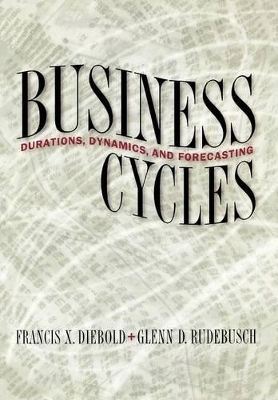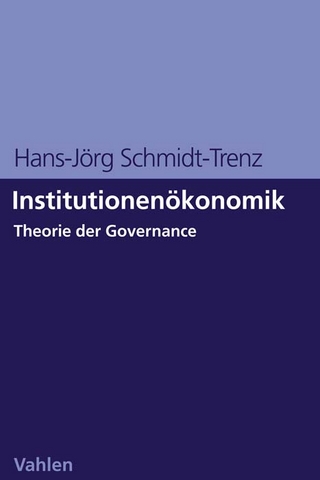
Business Cycles
Princeton University Press (Verlag)
978-0-691-01218-6 (ISBN)
This is the most sophisticated and up-to-date econometric analysis of business cycles now available. Francis Diebold and Glenn Rudebusch have long been acknowledged as leading experts on business cycles. And here they present a highly integrative collection of their most important essays on the subject, along with a detailed introduction that draws together the book's principal themes and findings. Diebold and Rudebusch use the latest quantitative methods to address five principal questions about the measurement, modeling, and forecasting of business cycles. They ask whether business cycles have become more moderate in the postwar period, concluding that recessions have, in fact, been shorter and shallower. They consider whether economic expansions and contractions tend to die of "old age." Contrary to popular wisdom, they find little evidence that expansions become more fragile the longer they last, although they do find that contractions are increasingly likely to end as they age. The authors discuss the defining characteristics of business cycles, focusing on how economic variables move together and on the timing of the slow alternation between expansions and contractions.
They explore the difficulties of distinguishing between long-term trends in the economy and cyclical fluctuations. And they examine how business cycles can be forecast, looking in particular at how to predict turning points in cycles, rather than merely the level of future economic activity. They show here that the index of leading economic indicators is a poor predictor of future economic activity, and consider what we can learn from other indicators, such as financial variables. Throughout, the authors make use of a variety of advanced econometric techniques, including nonparametric analysis, fractional integration, and regime-switching models. Business Cycles is crucial reading for policymakers, bankers, and business executives.
Francis X. Diebold is Professor of Economics and of Statistics at the University of Pennsylvania and Faculty Research Fellow at the National Bureau of Economic Research. He is the author of Elements of Forecasting and Empirical Models of Exchange Rate Dynamics. Glenn D. Rudebusch is a research officer at the Federal Reserve Bank of San Francisco. He has published widely in the fields of macroeconomics and econometrics.
PrefaceAcknowledgmentsPt. IIntroduction1Questions about Business Cycles5Pt. IIBusiness Cycle Durations2Have Postwar Economic Fluctuations Been Stabilized?353Shorter Recessions and Longer Expansions544A Nonparametric Investigation of Duration Dependence in the American Business Cycle645Further Evidence on Business Cycle Duration Dependence876Measuring Business Cycles: A Modern Perspective1177Regime Switching with Time-Varying Transition Probabilities144Pt. IIIBusiness Cycle Dynamics8Trends and Random Walks in Macroeconomic Time Series: A Reexamination1699The Uncertain Unit Root in Real GNP19410The Uncertain Unit Root in Real GNP: Comment20711Long Memory and Persistence in Aggregate Output21912Is Consumption Too Smooth? Long Memory and the Deaton Paradox24113On the Power of Dickey-Fuller Tests against Fractional Alternatives258Pt. IVBusiness Cycle Forecasting14The Past, Present, and Future of Macroeconomic Forecasting26715Scoring the Leading Indicators29016Turning Point Prediction with the Composite Leading Index: An Ex Ante Analysis31617Forecasting Output with the Composite Leading Index: A Real-Time Analysis34218New and Old Models of Business Investment: A Comparison of Forecasting Performance36119Comparing Predictive Accuracy387Name Index413Subject Index419
| Erscheint lt. Verlag | 12.4.1999 |
|---|---|
| Zusatzinfo | 83 tables 44 line illus. |
| Verlagsort | New Jersey |
| Sprache | englisch |
| Maße | 197 x 254 mm |
| Gewicht | 794 g |
| Themenwelt | Wirtschaft ► Volkswirtschaftslehre ► Mikroökonomie |
| Wirtschaft ► Volkswirtschaftslehre ► Ökonometrie | |
| ISBN-10 | 0-691-01218-0 / 0691012180 |
| ISBN-13 | 978-0-691-01218-6 / 9780691012186 |
| Zustand | Neuware |
| Haben Sie eine Frage zum Produkt? |
aus dem Bereich


